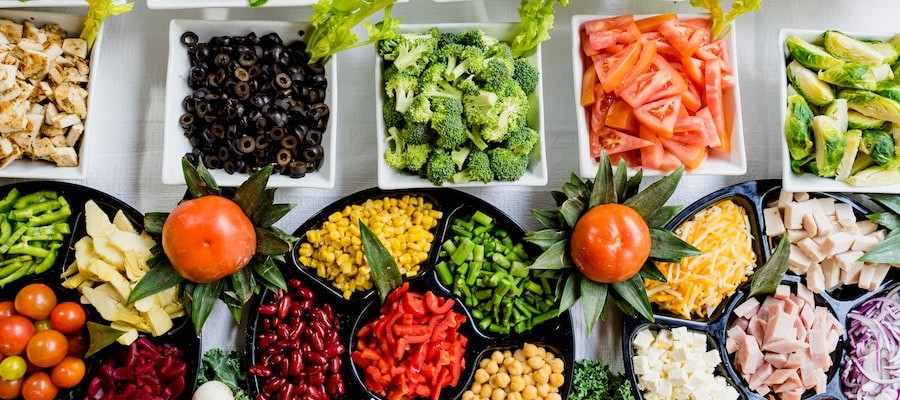
Food and Film: Exploring the Importance of Food in Cinema and the Best Food Movies
Table of Contents
Introduction
Food and film have always been two things closely connected to culture and entertainment. Combining the two can produce a wonderful, multisensory experience. From popcorn at the cinema to gourmet dining at your local indie film theatre, food and film make a perfect match.
In this article, we’ll explore the importance of food in cinema, how meals are depicted in film, and the unique relationship between the two. We’ll also take a look at some of the best food movies and explore their themes.
The Importance of Food in Cinema
Food is a universal language that ties people together. It can evoke memories and emotions like no other sensory experience. Food also has a special relationship with cinema. Throughout history, filmmakers have found creative ways to incorporate food in their works, using it as a metaphor, plot device, and source of symbolism.
Food as a Metaphor
In many films, food is used as a metaphor to represent something else. For example, in the classic film “Ratatouille,” the dish ratatouille represents the protagonist’s journey from humble beginnings to ultimately achieving his goals. Similarly, in the film “Big Night,” the struggle to make a perfect meal is a metaphor for the American dream, where success is only achieved through hard work and persistence.
Food as a Plot Device
Food is often used to drive the plot of films. For example, in the film “Chocolat,” the arrival of a chocolatier in a French village changes the lives of all the residents. In “The Hundred-Foot Journey,” the opening of an Indian restaurant across the street from a Michelin-starred French restaurant leads to a culinary rivalry and ultimately, a fusion of cuisines.
Food as a Source of Symbolism
Food can also be used as a source of symbolism in films. In the movie “Eat Drink Man Woman,” the father’s elaborate Sunday dinners represent his attempt to hold on to traditional values in the face of a rapidly changing world. In “Julie & Julia,” cooking Julia Child’s recipes represents the trying and sometimes frustrating journey of personal discovery and growth.
Meals on Film
Meals on film are usually more than just a source of nourishment. They are often used to represent themes, relationships, and emotions. Food helps to create atmosphere and add depth to characters and situations.
Fine Dining
Fine dining scenes in film are often a representation of elegance and class. A great example is the diner scene in “When Harry Met Sally,” where Sally orders a complicated meal to demonstrate her high standards. Similarly, in “Something’s Gotta Give,” we see the characters enjoying an extravagant feast that heightens the overall luxuriousness of the scene.
Family Dinners
Family dinners on film are often an opportunity to explore relationships and dynamics between characters. In “The Godfather,” the infamous dinner scene is used to demonstrate the tense family dynamic between Michael and the other members of the Corleone family. Similarly, in “Moonstruck,” family dinners are used to explore the complexities of family relationships, specifically the bond between mothers and daughters.
Meals of Nostalgia
Meals of nostalgia in film are used to evoke memories of the past. These meals are often simple and humble, and they serve as a reminder of a time that was simpler and more wholesome. A great example of this is the grilled cheese sandwich scene in “Chef,” where the father and son bond over a grilled cheese sandwich in a food truck. Similarly, in “Ratatouille,” the dish ratatouille evokes memories of the protagonist’s childhood and is a reminder of his passion for cooking.
Best Food Movies
There’s no shortage of great food movies out there. Here are some of the best:
- “Ratatouille” (2007)
- “Julie & Julia” (2009)
- “Eat Drink Man Woman” (1994)
- “Chocolat” (2000)
- “The Hundred-Foot Journey” (2014)
- “Chef” (2014)
- “Big Night” (1996)
- “Sideways” (2004)
- “Babette’s Feast” (1987)
- “Jiro Dreams of Sushi” (2011)
Themes in Food Movies
Food movies often explore themes that are universal and relatable. Some common themes include:
- Family
- Culture
- Tradition
- Pursuing your passion
- Overcoming obstacles
- Personal growth
Food movies often use food as a metaphor to explore these themes. For example, in “Sideways,” the protagonist’s love of wine is a metaphor for his search for meaning in life. Similarly, in “Julie & Julia,” cooking Julia Child’s recipes is a metaphor for the protagonist’s journey of self-discovery.
Conclusion
Food and film go hand in hand. Throughout history, filmmakers have used food to evoke emotions, drive the plot, and as a source of symbolism. Meals on film are often more than just a source of nourishment – they are used to represent themes, relationships, and emotions. From fine dining to family dinners, food scenes in movies create a multisensory experience that leaves a lasting impression. So, the next time you’re watching a movie, pay attention to the food scenes – you might just discover a new favorite food movie.